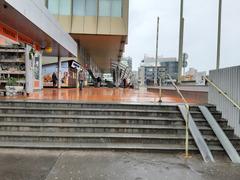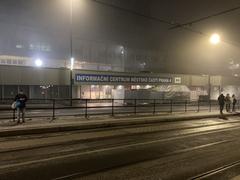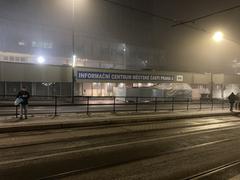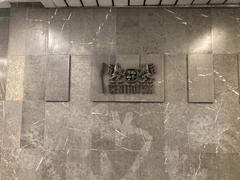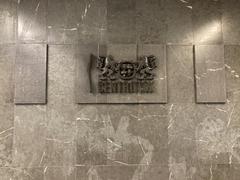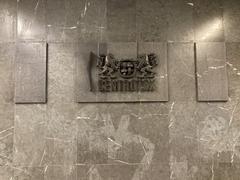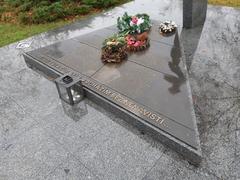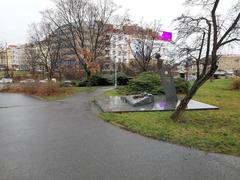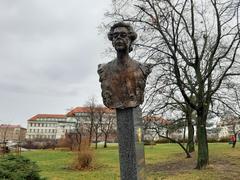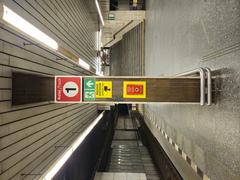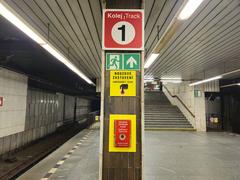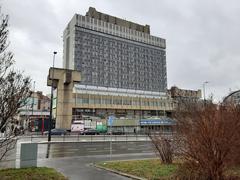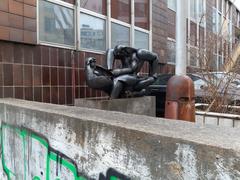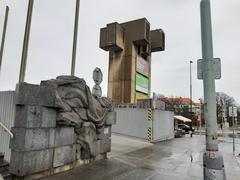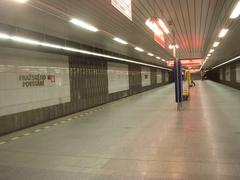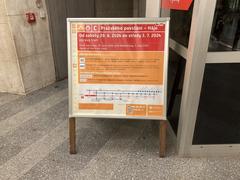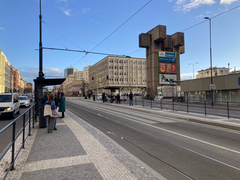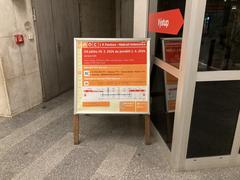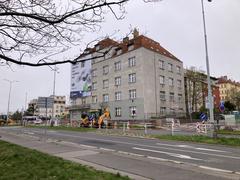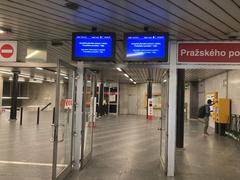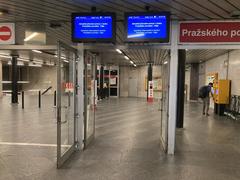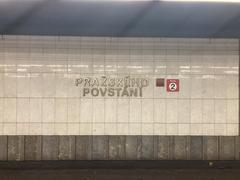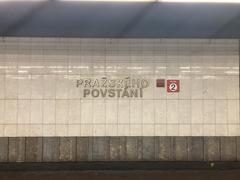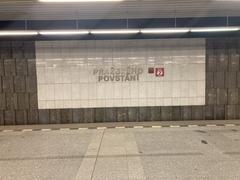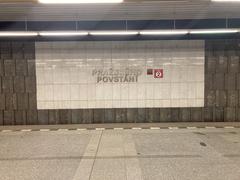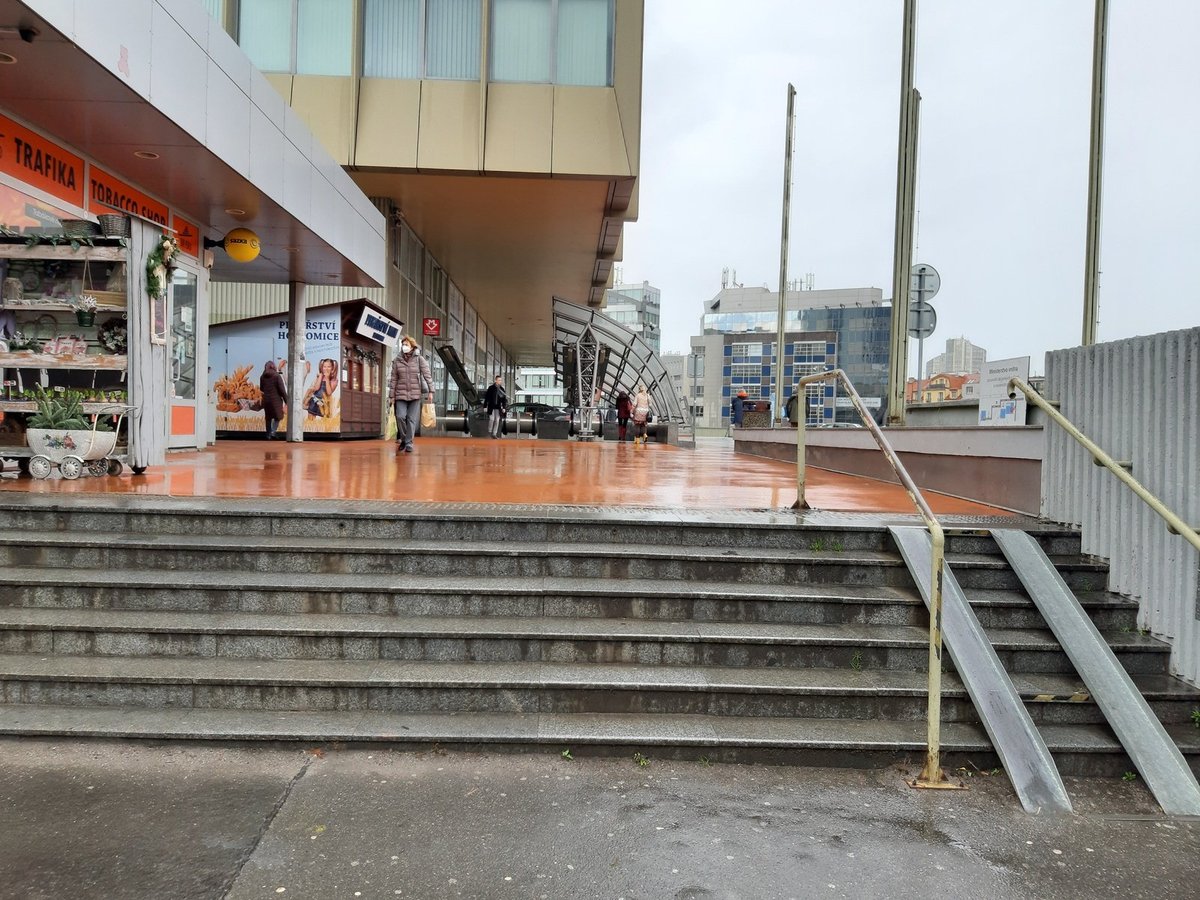
Pražského Povstání Visiting Hours, Tickets, and Guide to Prague Historical Sites
Date: 15/06/2025
Introduction
Pražského Povstání, meaning “Prague Uprising,” marks a pivotal event in Czech and European history. The uprising in May 1945 saw Czech citizens and resistance fighters rise against Nazi occupation in the waning days of World War II. Today, the memory of this courageous stand is preserved across Prague through memorials, museums, and historical landmarks. This guide provides a comprehensive overview of the uprising’s origins, essential sites to visit, practical tips on visiting hours and tickets, and insights into commemorative events. Whether you are a history enthusiast eager to walk the streets where barricades once stood, or a traveler seeking to understand Prague’s resilient spirit, this resource ensures a meaningful and accessible experience.
Conveniently, the Pražského Povstání metro station (Line C) serves as a gateway to many of these sites, as well as to nearby attractions like Vyšehrad Fortress and Nusle Bridge. The city’s integrated public transport system, clear ticketing, and commitment to accessibility make navigation easy for all visitors (Prague Tourist Information). Enhanced by guided tours and interactive apps such as Audiala, visitors can delve deeper into Prague’s wartime past and enduring legacy of freedom.
For the latest updates on visiting hours, tickets, and special programs, consult official resources like the Prague City Tourism website and related museum pages.
Table of Contents
- Introduction
- Historical Context of the Prague Uprising
- The Course of the Uprising
- Visiting Prague Uprising Sites
- Pražského Povstání Memorials
- Visitor Information
- Frequently Asked Questions (FAQ)
- Visuals and Media
- Internal Links
- Conclusion
Historical Context of the Prague Uprising
The Nazi occupation of Czechoslovakia began in March 1939, transforming the country into a critical industrial hub for the German war effort. By spring 1945, with the Allies advancing, Czech resistance intensified. Approximately 7,500 partisan fighters, supported by civilians, coordinated attacks and sabotage operations (National WWII Museum, Wikipedia).
The Prague Uprising officially erupted on May 5, 1945. Czech police and resistance fighters seized the main radio station, rallying the population to erect over 2,000 barricades across the city. The Czech National Council coordinated the struggle, seeking to regain sovereignty before the arrival of Soviet and American forces.
The Course of the Uprising
The uprising unfolded over four intense days, with fierce battles at critical locations:
- Czech Radio Building (Vinohradská 12): Site of pivotal broadcasts and fierce resistance.
- Old Town Hall: Suffered heavy damage, symbolizing both loss and resilience.
- Wenceslas Square: Center of public demonstrations and resistance activities.
German reprisals were brutal, but the resistance held key positions until the German garrison surrendered on May 8, following negotiations and the imminent arrival of the Red Army.
Visiting the Prague Uprising Historical Sites
Key Sites to Explore
- Old Town Hall (Staroměstská radnice): Features visible battle scars and hosts special exhibitions, including the 80th anniversary bell display in 2025.
- Czech Radio Building: Exterior plaques commemorate the site’s role; annual wreath-laying ceremonies occur each May.
- Wenceslas Square: Central location for historical reflection and access to nearby museums.
- Memorial Plaques and Stolpersteine: Distributed citywide, these honor individual victims and resistance fighters.
- Pražského Povstání Metro Station: Named for the uprising and located near Heroes’ Square, it serves as a symbolic gateway and starting point for exploration.
Visiting Hours and Tickets
- Outdoor Memorials and Plaques: Accessible 24/7 and free of charge.
- Old Town Hall: Open daily from 9:00 AM to 6:00 PM, entrance approx. 250 CZK. Special events may require advance booking (Prague City Tourism).
- Museums (e.g., National Museum): Typically open 10:00 AM–6:00 PM, entry 150–250 CZK.
- Guided Tours: 300–500 CZK; reserve in advance during anniversary events.
Guided Tours and Special Events
Guided and thematic tours are available year-round, with expanded offerings each May for the uprising’s anniversary. Audio guides and interactive apps, such as Audiala, enrich self-guided visits with historical context and multimedia content.
Accessibility and Travel Tips
- Public Transport: Metro, tram, and bus lines provide easy access; Pražského Povstání metro station is fully wheelchair accessible.
- On Foot: Expect cobblestone streets and some elevation changes; wear sturdy footwear.
- Language: Most sites offer information in English or provide QR codes for multilingual resources.
Pražského Povstání Memorials: Annual Events and Historical Insights
Key Memorials and Commemorative Sites
- Plaques and Stolpersteine: Found throughout Prague, marking homes, streets, and buildings associated with resistance and loss (Spolek Pro Vojenská Pietní Místa).
- Old Town Hall: Hosts major commemorations and exhibitions.
- Czech Radio Building: Scene of regular remembrance ceremonies.
- Pražského Povstání Metro Station: Integrates memorial elements in its design.
Annual Commemorative Events
- Wreath-Laying Ceremonies: Held at major sites around May 5th, open to the public (prahain.cz).
- Special Exhibitions: Museums offer unique displays for significant anniversaries, including artifacts, photographs, and original radio broadcasts (prague.eu/povstani80).
- Guided Walks: “Zažij Prahu” and “Pražská vlastivěda” tours highlight key events and sites.
Notable Controversies and Evolving Memorialization
Memorialization has evolved over time, reflecting changing historical perspectives. Notably, a plaque honoring Marshal Konev was removed from the Old Town Hall in 2018, now displayed in a museum, illustrating ongoing debates about the uprising’s legacy (cs.wikipedia.org).
Visitor Information: Getting There, Local Amenities, and Practical Tips
Getting to Pražského Povstání
- By Metro: Line C (red), south of the city center; three stops from Hlavní nádraží (main train station).
- By Tram/Bus: Multiple lines connect to metro; tickets are valid across all public transit (Prague.org).
- From Airport: Take bus 119 to Nádraží Veleslavín (Line A), transfer to Line C at Muzeum (Prague Experience).
Ticketing and Operating Hours
- Public Transport: Tickets (30–330 CZK) cover metro, trams, and buses. Validate before boarding (Prague Tourist Information).
- Metro Hours: 5:00 AM to midnight daily.
- Tourist Passes: Prague Visitor Pass (from €63) includes transport and attraction entry.
Accessibility
- Stations and Vehicles: Most have elevators, ramps, and low-floor access.
- Info: Check individual sites for specific accessibility features.
Local Amenities
- ATMs: Available at/near the metro station.
- Food & Drink: Local cafés, bakeries, and pubs offer authentic Czech cuisine and affordable prices.
- Restrooms: Public facilities at the station (10–20 CZK).
- Wi-Fi: Available in some stations and cafés; consider eSIM for mobile data (Prague Tourist Information).
Safety and Etiquette
- Safety: Nusle district and Prague are generally safe; standard precautions apply (View from Prague).
- Etiquette: Respect quiet hours (10:00 PM–6:00 AM), tip 5–10% in restaurants, and learn a few Czech phrases for courtesy.
Practical Tips
- Validate Tickets: Immediate validation required.
- Cash vs. Card: Both widely accepted; small vendors may prefer cash.
- Seasonal Weather: Pack accordingly; umbrella for spring/autumn, warm clothes for winter.
- Apps: Download PID Lítačka for real-time transit info (Prague Views).
- Tap Water: Safe to drink citywide (Prague Views).
Frequently Asked Questions (FAQ)
Q: What are the hours for visiting Pražského Povstání memorials?
A: Outdoor sites are open 24/7. Museums and indoor sites are generally open 9:00 AM–6:00 PM.
Q: Are tickets required for all sites?
A: Outdoor memorials are free; museums/indoor exhibitions and guided tours require tickets.
Q: Is Pražského Povstání metro station wheelchair accessible?
A: Yes, including elevators and ramps.
Q: What are the best times to visit?
A: Late spring (May–June) and early fall (September) offer mild weather and fewer crowds.
Q: How do I buy public transport tickets?
A: At metro stations, newsstands, or via official apps; validate before travel.
Q: What nearby attractions can I visit?
A: Vyšehrad Fortress, Nusle Bridge, local parks, and historic neighborhoods.
Visuals and Media
Insert high-quality images with alt tags such as “Pražského Povstání metro station entrance,” “Old Town Hall Prague Uprising memorial,” and “Vyšehrad Fortress panoramic view.” Include a map showing Pražského Povstání’s location and links to virtual tours if available.
Internal Links
Conclusion
Exploring Pražského Povstání and Prague’s uprising memorials offers a powerful journey through the city’s wartime history and the resilience of its people. With accessible public transport, flexible visiting hours, and a range of commemorative sites, every visitor can engage meaningfully with this defining chapter. For the most up-to-date information, consult official tourism and museum websites, and consider using the Audiala app to enhance your experience with audio guides and real-time updates. Embrace the opportunity to honor Prague’s enduring spirit and discover the stories that continue to inspire and unite.
References and Official Links for Pražského Povstání
- National WWII Museum: Prague Uprising 1945
- Wikipedia: Prague Uprising
- Prague City Tourism: 80th Anniversary of the End of WWII and Prague Uprising
- Official Prague Tourism Website
- Prague Tourist Information: Public Transport
- Spolek Pro Vojenská Pietní Místa
- prahain.cz: Commemorative Events
- prague.eu/povstani80: 80th Anniversary Resources
- Prague.org: Tram and Transport Info
- Prague Experience: Visitor Info
- Wonderful Wanderings: Prague
- View from Prague: First-Time Visitor Tips
- Prague Views: Practical Tips
